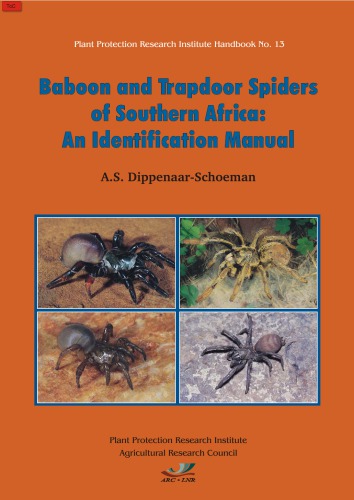

Most ebook files are in PDF format, so you can easily read them using various software such as Foxit Reader or directly on the Google Chrome browser.
Some ebook files are released by publishers in other formats such as .awz, .mobi, .epub, .fb2, etc. You may need to install specific software to read these formats on mobile/PC, such as Calibre.
Please read the tutorial at this link. https://ebooknice.com/page/post?id=faq
We offer FREE conversion to the popular formats you request; however, this may take some time. Therefore, right after payment, please email us, and we will try to provide the service as quickly as possible.
For some exceptional file formats or broken links (if any), please refrain from opening any disputes. Instead, email us first, and we will try to assist within a maximum of 6 hours.
EbookNice Team

Status:
Available4.5
16 reviewsMost mygalomorph families are terrestrial and live in silk-lined retreats, either in burrows of various shapes made in the soil or in sac-like chambers made under rocks or on tree trunks. The entrances to these retreats are either open or closed with a trapdoor made out of silk and soil particles. Most species are nocturnal and hide during the day in the retreats. At night they wait at the entrance for passing prey or they wander around in search of food. They prey on a variety of insects and small animals and form an important part of the ecological food web.
Except for scientific descriptions, checklists and short notes in popular field guides, little information is available on the mygalomorph spider fauna of Southern Africa. In this manual, information compiled from published records, with some additional observations, provides the reader with tools for identifying and understanding the vast mygalomorph spider fauna of the subregion. It forms part of a series of practical identification manuals for the families, subfamilies, genera and the more common species of spiders found in Southern Africa.
This manual contains the following information:
• illustrated keys, diagnostic and descriptive characters, taxonomic notes, and notes on the natural history and distribution of the mygalomorph families, subfamilies and genera;
• illustrated keys to species (where possible), and taxonomic notes and distribution records for each species;
• a comprehensive bibliography;
• appendixes with the following:
alphabetical list of families, genera and species;
list of generic synonyms;
list of abbreviations.